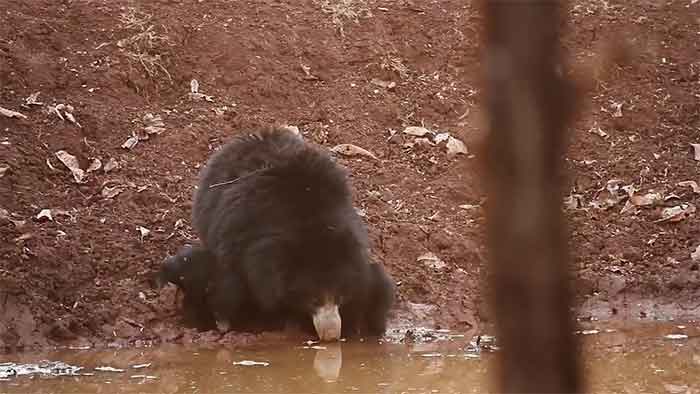
As the summer advances, there are increasing reports of acute drinking water shortages from many villages. A recent report from Himachal Pradesh, for example, says that over 400 drinking water schemes of Shimla and over 220 schemes of Mandi have been hit by a spell of dry weather. This is the situation in early April and the situation is likely to worsen in the coming weeks. Another report on a dwindling water source said that the situation caused by a dry spell has been aggravated by illegal mining.
However the focus here as well as elsewhere is mainly on ensuring the water needs of human habitations while meeting the water needs of wild life is way down the priority list. In such a situation it is heart-warming to learn of an initiative by some youth in rural areas like Dasomajra, Khaskhol and Kenduwal ( Solan district ) who have identified drying water sources in nearby forests and are filling them with tankers to quench the thirst of wild life.
This effort is all the more praiseworthy at a time when forest fires have created great risks for wild life and also led to faster drying up of water sources. Hence the thirst problem of wild animals has really become very acute and they have been roaming here and there in desperate condition. An additional risk for them is that if they venture in search of water to water sources nearer to human habitations, they are trapped or hunted by hunters waiting for them.
As the river flows in several parts of Himalayan region have been increasingly diverted for hydel projects, the original path of river suddenly dries and there is acute drinking water crisis for various forms of life who had been quenching their thirst from this river since ages. On the other hand the blasting for construction as the throwing or deposition of enormous rubble also destroys several water sources.
If the situation in the Himalayan region can become so serious, one can imagine the condition in other areas where acutely hot conditions prevail. In forests of Africa many elephant deaths have been reported from Zimbabwe and other countries related mainly to acute thirst conditions. How can big animals who need huge amounts of water survive in conditions of acute water crisis?
Their first response may be to migrate to other forest areas with better water sources but this option is often not available. Hence they may move nearer to human habitations where they may be trapped or hunted. More problems of human-animal conflict may be reported from villages and ordinary villagers and farmers may also suffer. Wild animals crossing highways and railway lines may die in accidents.
Another problem relates to stray animals or farm and dairy animals who have been abandoned as they are no longer useful for households who kept them earlier, or else who cannot be maintained by them for other reasons ( for example drought conditions). In regions like Bundelkhand, their condition due to lack of water becomes pathetic at the time of drought.
To avoid serious problems for wild life as well as for nearby human habitations, it is important to take up more water conservation work in forest areas, and to ensure that enough water flow is maintained in rivers and streams flowing through forest areas.
Bharat Dogra is a journalist and author. His recent books include Planet In Peril and Protecting Earth for Children.
GET COUNTERCURRENTS DAILY NEWSLETTER STRAIGHT TO YOUR INBOX
 RSS Feed
RSS Feed















 April 13th, 2021
April 13th, 2021  Awake Goy
Awake Goy  Posted in
Posted in  Tags:
Tags: 













